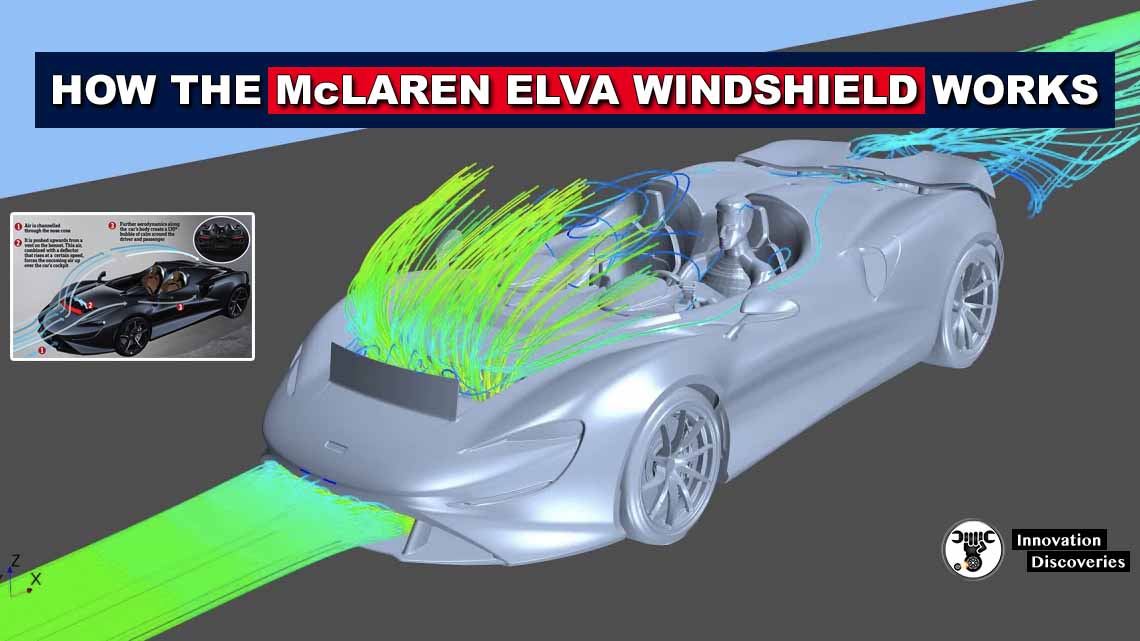
The McLaren Elva is a breathtaking masterpiece of automotive engineering, showcasing cutting-edge technology and captivating design. One of its most remarkable features is the “Invisible Windshield,” an innovative system that eliminates the need for a traditional windscreen, providing an exhilarating open-top driving experience.
In this article, we will explore the inner workings of the McLaren Elva’s Invisible Windshield, delving into its advanced technology and discussing the benefits it offers to drivers and passengers alike.
The Concept behind the Invisible Windshield:
The McLaren Elva’s Invisible Windshield is a groundbreaking concept that challenges conventional automotive design. The idea behind this feature is to eliminate the windscreen entirely, creating an uninterrupted view and an immersive driving experience.
By eliminating the traditional windscreen, McLaren aimed to minimize wind buffeting and enhance the sensation of speed while ensuring occupant safety.
Aerodynamic Engineering:
To compensate for the absence of a windscreen, the Elva incorporates advanced aerodynamic engineering. The car’s sculpted bodywork and carefully designed contours channel airflow over the cabin, creating a “bubble” of calm air for both the driver and the passenger.
This innovative aerodynamic system significantly reduces wind disturbance, making it possible to drive at high speeds without the need for a physical windscreen.
Active Air Management System:
The McLaren Elva employs an active air management system to further enhance the driving experience. This system consists of adjustable carbon-fiber panels integrated into the car’s front splitter, which dynamically redirect air around the cockpit.
By adjusting these panels, the Elva can optimize aerodynamic forces, redirecting air away from the cabin to mitigate wind turbulence. This technology ensures that occupants enjoy a comfortable ride, free from excessive wind forces and buffeting.
Aerodynamic Barrier:
In addition to redirecting airflow, the Elva employs an aerodynamic barrier to protect occupants from debris and other road hazards. The barrier comprises a low-profile deflector located just ahead of the occupants, which helps create a high-pressure zone that deflects air over the cabin.
This innovative solution acts as a virtual windscreen, diverting airflow over the passengers and reducing the impact of debris.
Active Protection and Safety Measures:
Although the McLaren Elva’s Invisible Windshield provides an unobstructed view, the absence of a traditional windscreen does not compromise occupant safety. McLaren has integrated several active protection and safety features into the Elva’s design.
These include advanced seatbelt systems, roll-over protection, reinforced chassis construction, and an intelligent stability control system. These safety measures ensure that occupants are well-protected in the event of an accident or unforeseen circumstances.
Driver-Centric Technology:
The McLaren Elva’s Invisible Windshield is a testament to the brand’s commitment to driver-centric technology. By eliminating the traditional windscreen, McLaren has created an unparalleled driving experience that immerses the driver in the environment while maintaining safety and comfort.
The absence of a windscreen allows the driver to feel connected to the road and fully engaged with the car, heightening the overall driving pleasure.
Conclusion:
The McLaren Elva’s Invisible Windshield represents a revolutionary leap in automotive design and engineering. By leveraging advanced aerodynamic principles, active air management systems, and safety measures, McLaren has successfully created an open-top supercar that provides an unmatched driving experience.
The absence of a traditional windscreen enhances the connection between driver and machine while ensuring passenger safety. The McLaren Elva stands as a testament to the brand’s commitment to pushing boundaries and redefining what is possible in the realm of automotive innovation.



3 Comments